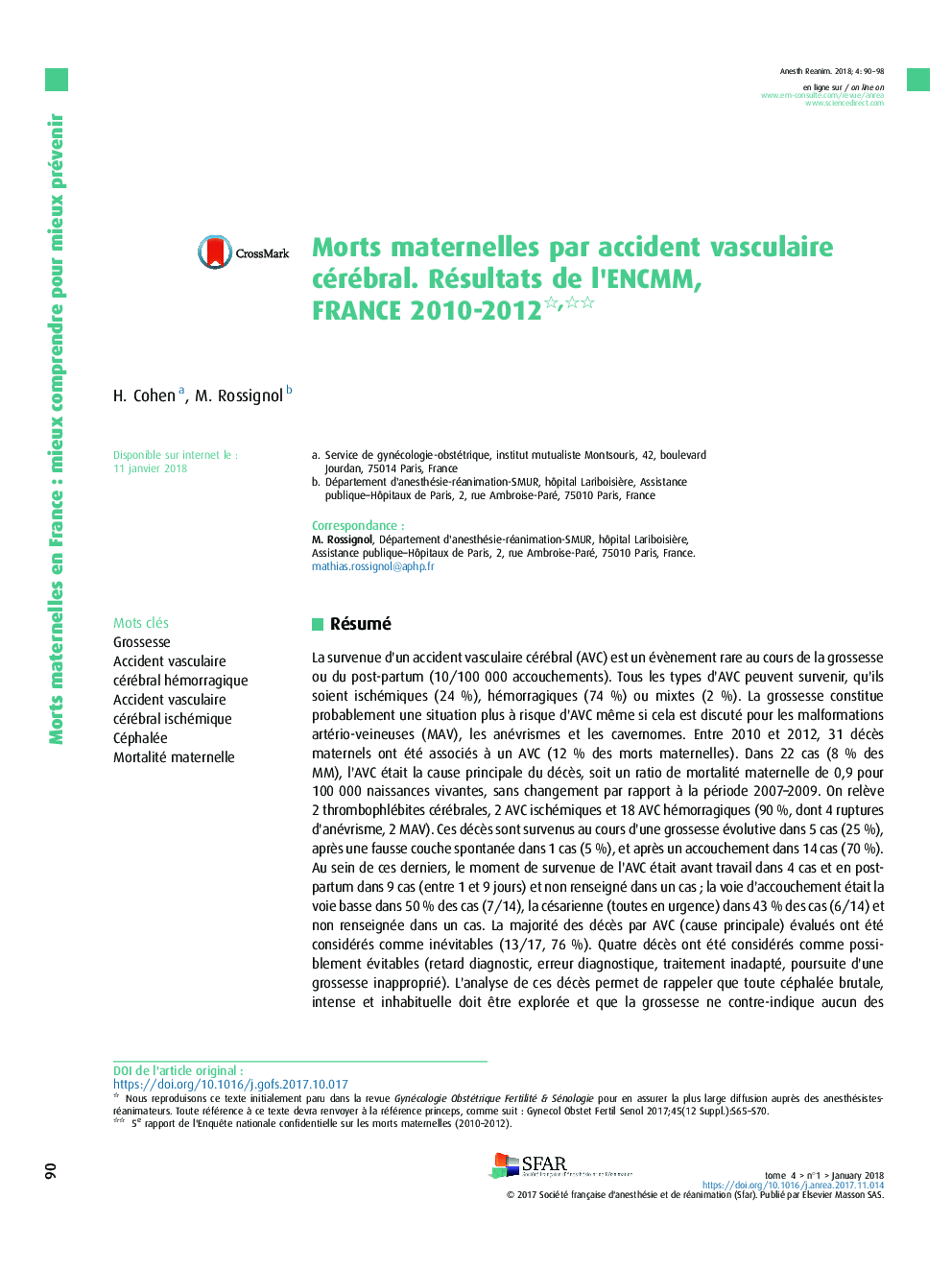| Article ID | Journal | Published Year | Pages | File Type |
|---|---|---|---|---|
| 8610470 | Anesthésie & Réanimation | 2018 | 9 Pages |
Abstract
Stroke is a rare event during pregnancy (10/100,000) and can be ischemic (24%), hemorrhagic (74%) or both (2%). Pregnancy probably increases the risk even if it is discussed for arteriovenous malformation (AVM), aneurismal subarachnoid hemorrhage (SAH) and cavernomas. Between 2010 and 2012, 31 maternal deaths were associated with stroke. In 22 cases, stroke was the direct cause of death giving a maternal mortality ratio of 0,9/100,000 witch is not different from the former report (2007-2009). There were 2 cerebral thrombophlebitis, 2 ischemic strokes and 18 hemorrhagic strokes (4 SAH, 2 AVM). These deaths occurred during ongoing pregnancy in 5 cases (25%), after miscarriage in 1 case (5%) and in the post-partum period in 14 cases (70%). In this last situation, stroke occurred before delivery in 4 cases and during the post-partum period in 9 cases (1 to 9 days) (1 unknown). There were 7 vaginal deliveries (50%) and 6 emergency cesarean sections (43%) (1 unknown). Most of those deaths were considered to be unavoidable (13/17, 76%). Four deaths were considered by the experts as being possibly avoidable (delay diagnosis, diagnostic error, inadequate treatment, lake of interruption of the pregnancy). Analyzing those deaths remind that any sudden, severe and unusual headache must be explored and that pregnancy does not contraindicate any of the diagnostic examinations (TDM, angio-TDM, MRI) or invasive treatments (surgery, arterio-embolization, fibrinolysis) necessary for its management. Furthermore, the diagnosis of postdural puncture headache should not be establishedwithout imaging when the symptomatology is not absolutely typical.
Keywords
Related Topics
Health Sciences
Medicine and Dentistry
Anesthesiology and Pain Medicine
Authors
H. Cohen, M. Rossignol,
